Our planet has mind-blowing diversity among its many truly amazing creatures.
Even in the simplest creatures is incredible complexity, each one born with the innate ability to flourish in its own unique environment. That’s not to mention the more complex, fascinating creatures, six of which are the subjects of this article.
Within Earth is an infinite number of smaller worlds from the deep, high pressure, zero light ocean environments to the hottest, most arid desert plains to the low pressure, freezing cold temperatures atop our snowcapped mountains. In each of these mini worlds exist creatures who excel in them.
Of course a single web page could never cover all of these amazing creatures. Further, we’re only aware of a fraction of them.
We’ll start with six of the more interesting ones. Included are photos, information, and a short video or two of each one.
Amazing Creatures
The Star-Nosed Mole
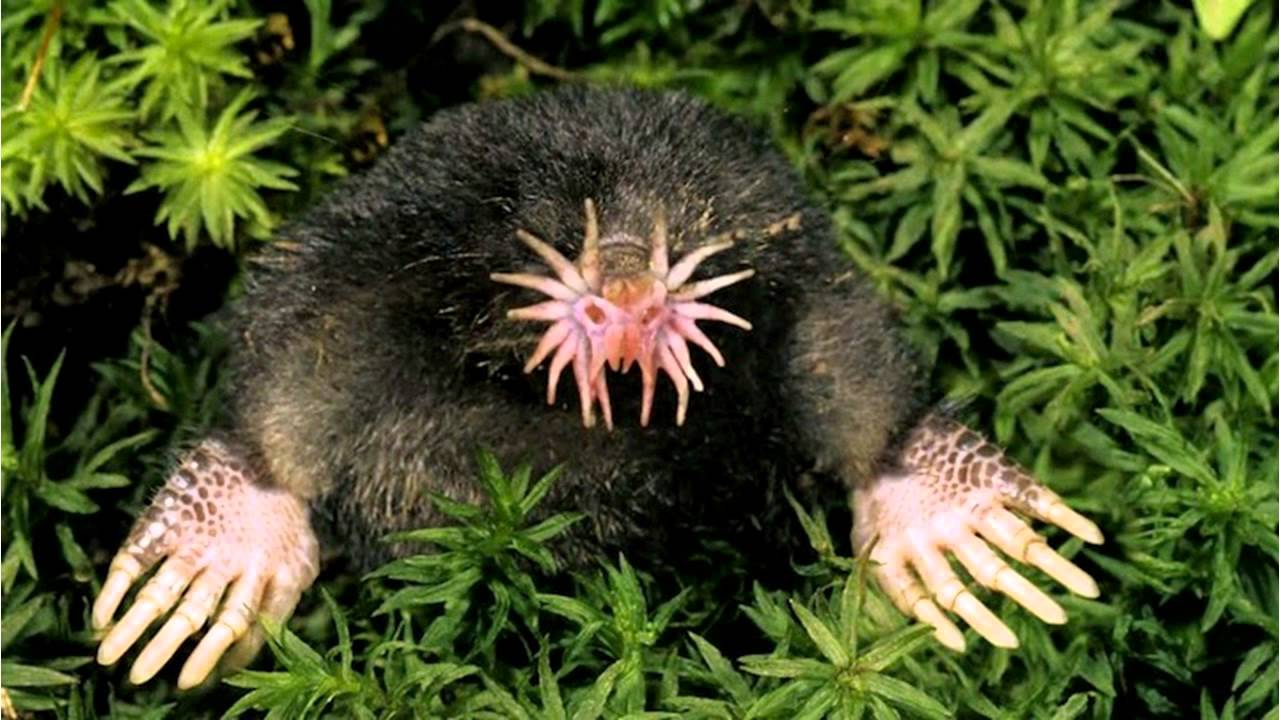
This crazy little critter’s claim to fame is its nose, which is the most sensitive organ in the animal kingdom, with twenty-two tendrils it uses to feel around its damp environment.
Since the star-nosed mole is functionally blind, it relies on touch: its nose essentially prints a 3D image of its surroundings in its brain by touching the ground up to thirteen times per second.
It lives in the wetlands of North America and mostly eats aquatic insects, crustaceans, and little fish, supplemented with worms and insects from the soil.
It is the only creature known to be able to smell underwater, which it does by expelling bubbles, then taking them back in where they come into contact with the mole’s olfactory organs. This mole is the only animal known to be able to follow a trail of scent underwater. Have a look:
To see it in action above water, see this video:
Bonus facts:
This mole can even swim under ice to forage.
We don’t know how these animals communicate with each other.
(Source here.)
The Platypus

The platypus, native to eastern Australia and Tasmania, has a beaver’s tail, webbed feet, and the bill of a duck: a reminder of nature’s sense of humor.
It feeds mostly on shrimp, worms, larvae, and crustaceans, grabbing them underwater and packing them into little pockets in its cheeks so it can eat them when it returns to the surface.
While you’re undoubtedly familiar with the platypus and maybe some general facts, you may not know that it is one of the few venomous mammals, injecting venom in its victims (usually other male platypuses during mating season, or other attackers) from syringe-like stingers on its back heels.
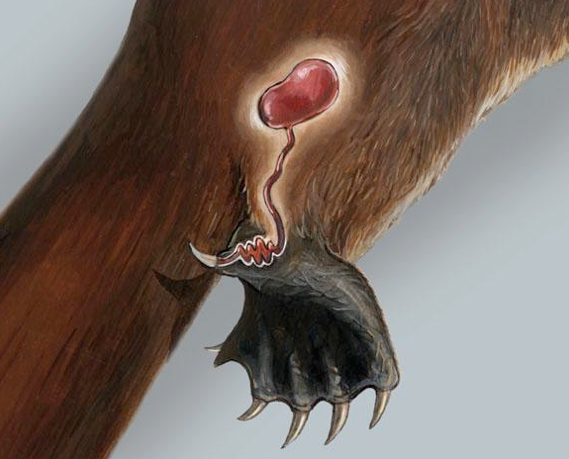
The venom is strong enough to kill a small dog or at the very least, ruin a human’s day or week.
When a platypus feeds underwater, its eyes, ears, and nostrils snap shut. It uses its sense of touch, but more impressively, electroreception. Its bill has highly sensitive electroreceptive sensors that can detect the electric fields emitted by all living organisms.
Have a look:
Bonus facts:
The platypus is one of the only mammals to lay eggs.
When it goes from water to land, the webbing on its feet retract to expose its feet and nails, which are far superior for land travel.
The Archerfish
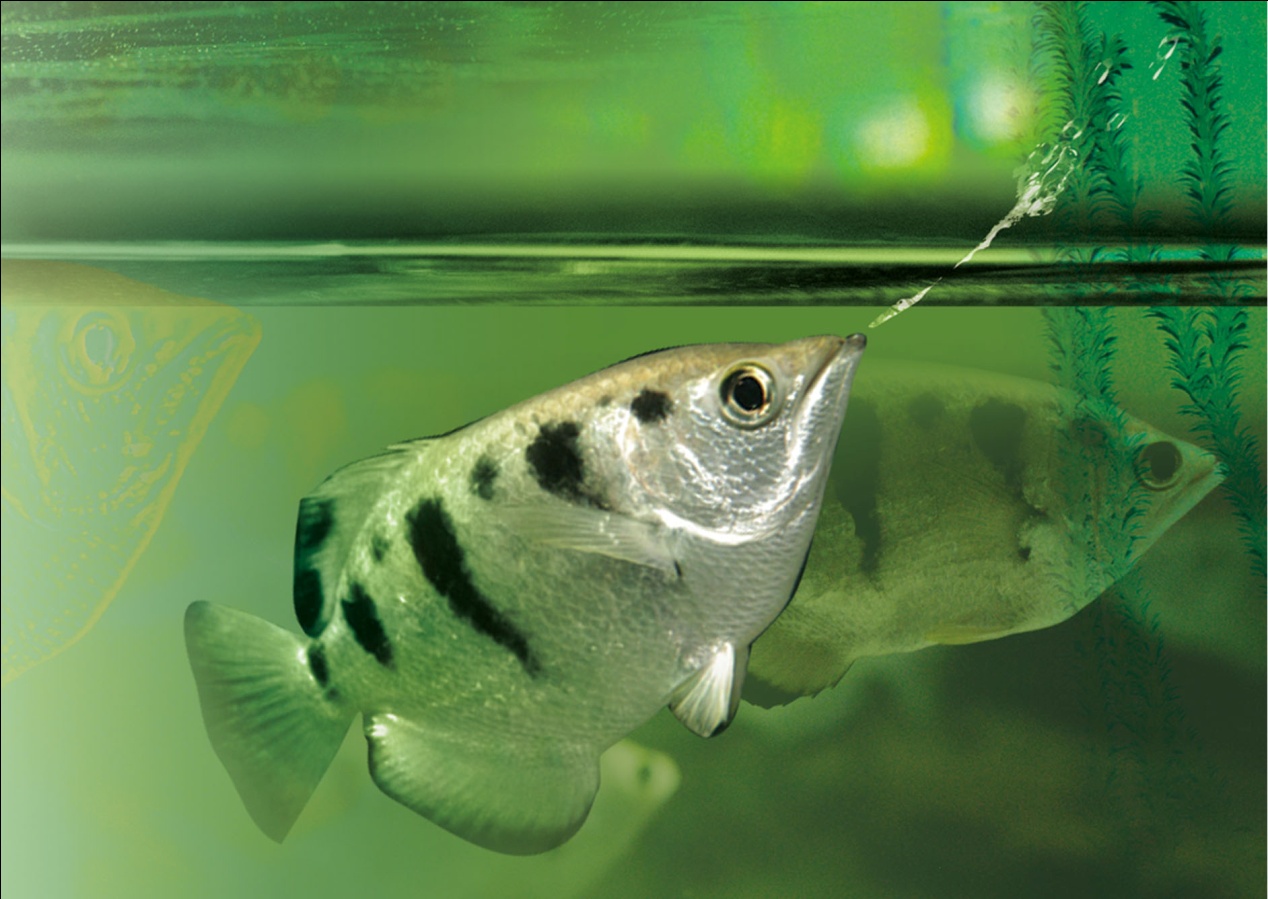
The aptly named archerfish, found in rivers and streams across Asia, shoots little streams of water from just below the surface to knock insects off of overhanging plants. When the insects fall into the water, the fish are immediately there to eat them up. Their powerful streams of water are accurate up to three meters.
The most impressive part, however, is that these fish are able to adjust their aim based not only on the distance of their prey (i.e. gravity’s effect on their stream of water), but also based on the angle of their pray from the surface of the water (i.e. they adjust to correct for light refraction). You know how when you look into or out of the water, objects seem to be in a place they’re not? The archerfish knows exactly how to adjust for the difference. Check it out:
Bonus facts:
Young archerfish are too small to produce effective water streams for hunting, so they hunt in schools to increase the odds that they’ll knock their targets off of their perches.
They can also learn how to aim and use their jets simply by watching other archerfish hunt.
The Pistol Shrimp
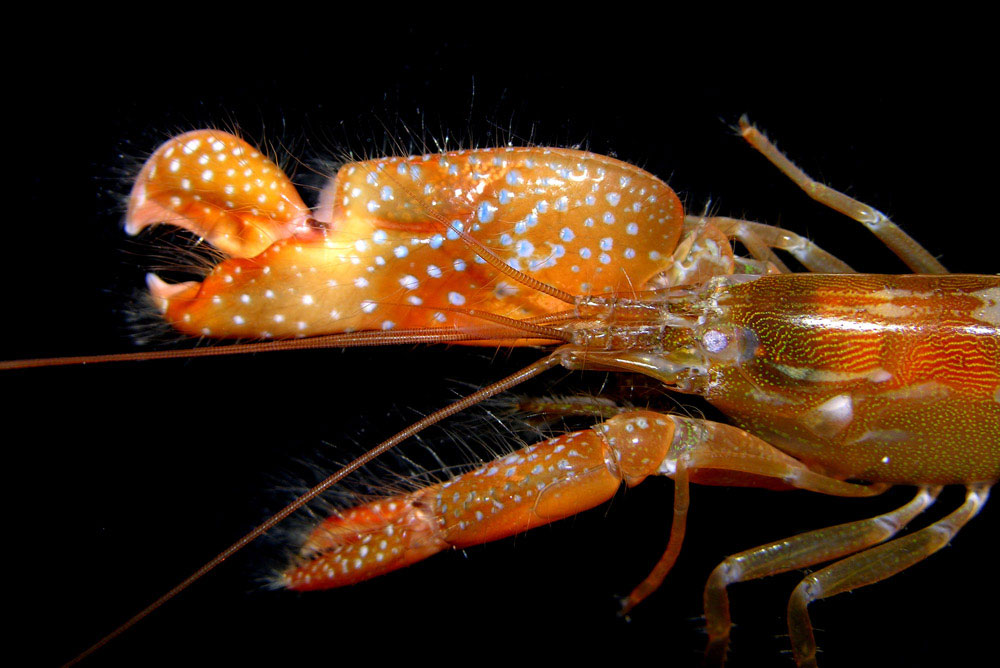
Although “pistol shrimp” covers many different species, the most notable trait they all share is a pistol-like claw. It cocks open, and when it slams shut, the force is so strong that it creates a cavitation bubble (caused by a rapid change in pressure), and even a brief flash of light. When the bubble collapses, it creates a shock wave that can stun or kill prey from a distance, after which the shrimp uses its other, smaller claw to drag its meal into its burrow.
The water around the cavitation bubble (very) temporarily reaches close to the temperature of the sun, and the resulting sound can be up to 210 decibels, which is louder than both a gunshot and a jet engine. The human eardrum collapses at around 150 decibels.
Most of these shrimp species are found in tropical and temperate coastal waters.
Here’s a video showing the pistol shrimp in action. I’m not a fan of the gunshot sounds they added, but it’s by far the best footage available:
Bonus facts:
If a pistol shrimp’s pistol-like claw is damaged or removed, its smaller claw will grow and transform into the lost weapon, and the missing claw will regrow to become the smaller one used for dragging prey.
Pistol shrimp often engage in symbiotic relationships with gobies, who benefit with a nice, clean home and pistol protection while providing their buddy shrimp with an enhanced ability to detect predators due to their superior eyesight.
Sailors in the tropics can often easily hear, from above the surface of the water, the snapping and crackling that originates deep underwater with these little shrimp. Their snapping can interfere with sonar and underwater communication.
The Mantis Shrimp
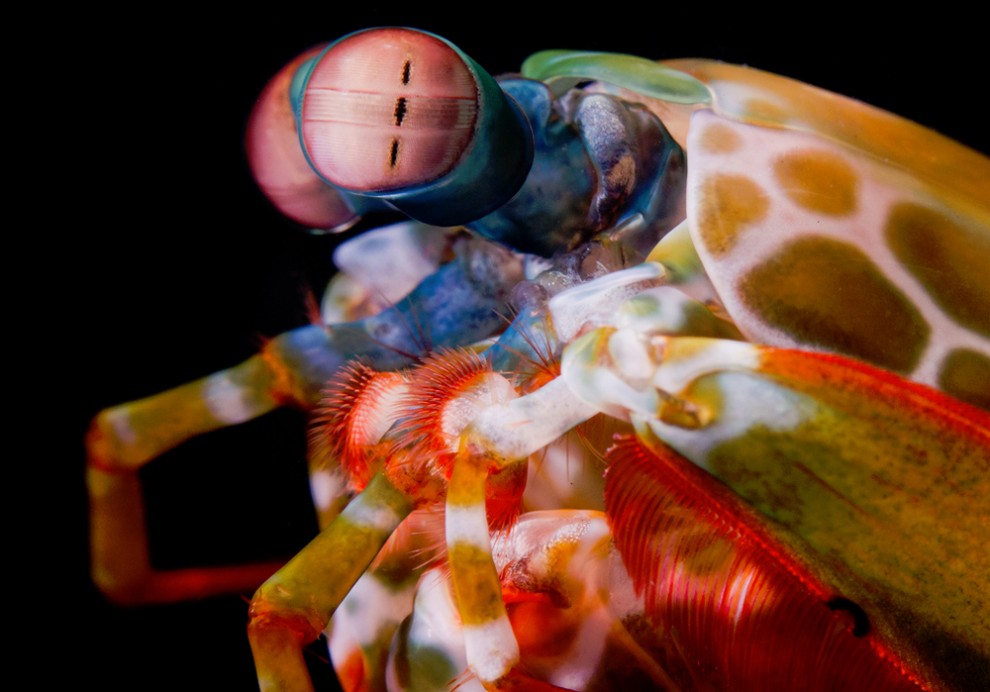
Similarly to the pistol shrimp, “mantis shrimp” covers many different species, most of which are found in the tropical seas of the Indian and Pacific oceans.
Also similarly to the pistol shrimp, the mantis shrimp’s weapon, which is two club-like appendages, strikes fifty times faster than the blink of an eye. The strike also creates a cavitation bubble and a brief flash of light, along with the accompanying shock wave that further serves to stun or kill prey if the original strike doesn’t.
These shrimp feed on a variety of critters from shrimp to crabs to clams to fish, their clubs making quick work of shellfish by easily destroying their shells to expose the soft meat.
In addition to their violent feeding habits, mantis shrimp have the most complex eyes in the animal kingdom. While we humans have a mere three photoreceptors in our eyes, these shrimp have sixteen, which allows them to see UV and polarized light. Each eye can move independently, and each one is capable of acute depth perception, which is probably important given the strength of their punch. Suffice to say, their visual experience is far different from ours.
No mention of the mantis shrimp would be complete without The Oatmeal’s comic, which you can view here.
In the video below you can watch a mantis shrimp in action:
Bonus facts:
The mantis shrimp has been known to smash aquarium glass with its strikes.
The acceleration of its clubs is the same as a .22 caliber bullet.
The Mimic Octopus
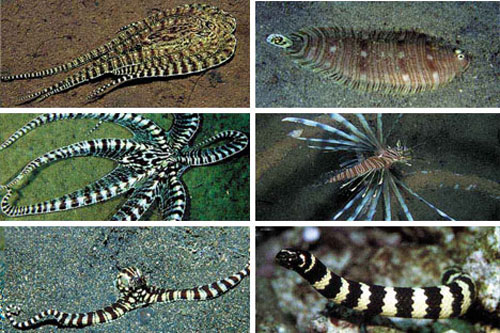
Last but not least, the mimic octopus, found in the shallow, warm waters of Indonesia and Malaysia, has the incredible power of taking the color, texture, shape, and behavior of a number of other creatures in order to disguise itself from predators. This is in addition to its usual octopus defense of shooting off and leaving its attacker in a cloud of ink.
There really isn’t much to say about this amazing creature other than you really need to watch it in action:
Bonus facts:
Most of the species it mimics are poisonous.
It is even able to almost perfectly mimic rocks, sponges, and coral to blend into its environment.
(Source here.)
Final Thoughts
What an incredible world we live in. While we share it with millions of different animals (and plants), our experience of it is inconceivably different from theirs.
Can you imagine what it would be like to operate only with touch and smell like the star-nosed mole? Or what the visual experience of a mantis shrimp is? While it’s fun to wonder, it’s completely beyond our human conception of reality. Yet these amazing creatures operate just as, if not more effectively than we do on our planet.
How can these creatures have evolved the capabilities they have? I’m no evolution denier, but it seems impossible that so many species could have evolved to have the incredibly specialized traits they have. Like most other things in life and on Earth, it’s beyond my ability to understand.
And I’d have it no other way, because otherwise Earth could possibly be quite boring instead of rich beyond the most capable wordsmith’s ability to describe it.